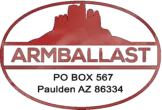N Scale Model Railroad is a popular railway modeling scale. Depending on the manufacturer, the scale ranges from 1∶148 to 1∶160. N scale and N gauge are often inaccurately used interchangeably, as the scale is defined as ratio or proportion of the model, and gauge only as a distance between rails.
HISTORY
While trains and items of similar scale existed as early as 1972. The modern N scale models were first launched in 1962 by the Arnold Company of Nuremberg. Unlike other scales and gauges, which were de facto standards at best. Within two years, N-scale manufacturers defined the gauge and voltage and the height and type of couplers. N scale has a huge following globally and is only second to the HO scale in popularity. Not all modelers select the N scale because of space limits. Some chose the N scale to build more complex or more visually expansive models.
We have over 25 ballast colors in N Scale

SCALE
The scale 1∶148 defines the rail-to-rail gauge equal to 9 mm exactly (at the cost of scale exactness). So when calculating the rail or track, use 1∶160, and for engines and car wheelbase, use 1∶148. All rails are spaced 9 mm apart, but the height can differ. Rail height (in thousandths of an inch) is expressed as a “code”: thus, Code 55 rails are 0.055 inches (1.4 mm) high while Code 80 rails have a height of 0.080 inches (2.0 mm).
Common real railroad rails are at least 6 inches (150 mm) tall. It can be taller on some roads so that the rails would be about 0.040 inches (1.0 mm) high at true scale. Many older N-scale models may not run well on Code 55 track as their flanges are often unrealistically large. Causing the wheels to bounce along with the ties instead of the ride along the railhead. Wheelsets with these large flanges are colloquially known as ‘pizza cutters’ due to a resemblance to the kitchen utensil.
ADVANTAGES
One major advantage of the N scale is that it allows model railroaders to build layouts that consume less space than the HO scale. It also places longer track runs into the same amount of space because N scale models are smaller than HO scale models nearly a half. While the N scale is quite small, it is not the smallest commercially available scale, as the Z scale is smaller yet at 1∶220, and the T scale is 1∶450 or 1∶480. N scale is generally considered compatible with a 1∶144 scale for miniature wargaming.
SOURCES
https://www.nmra.org/sites/default/files/standards/sandrp/pdf/S-1.2%202009.07.pdf https://mrr.trains.com/how-to/get-started/2010/01/model-railroad-track-codes-defined
